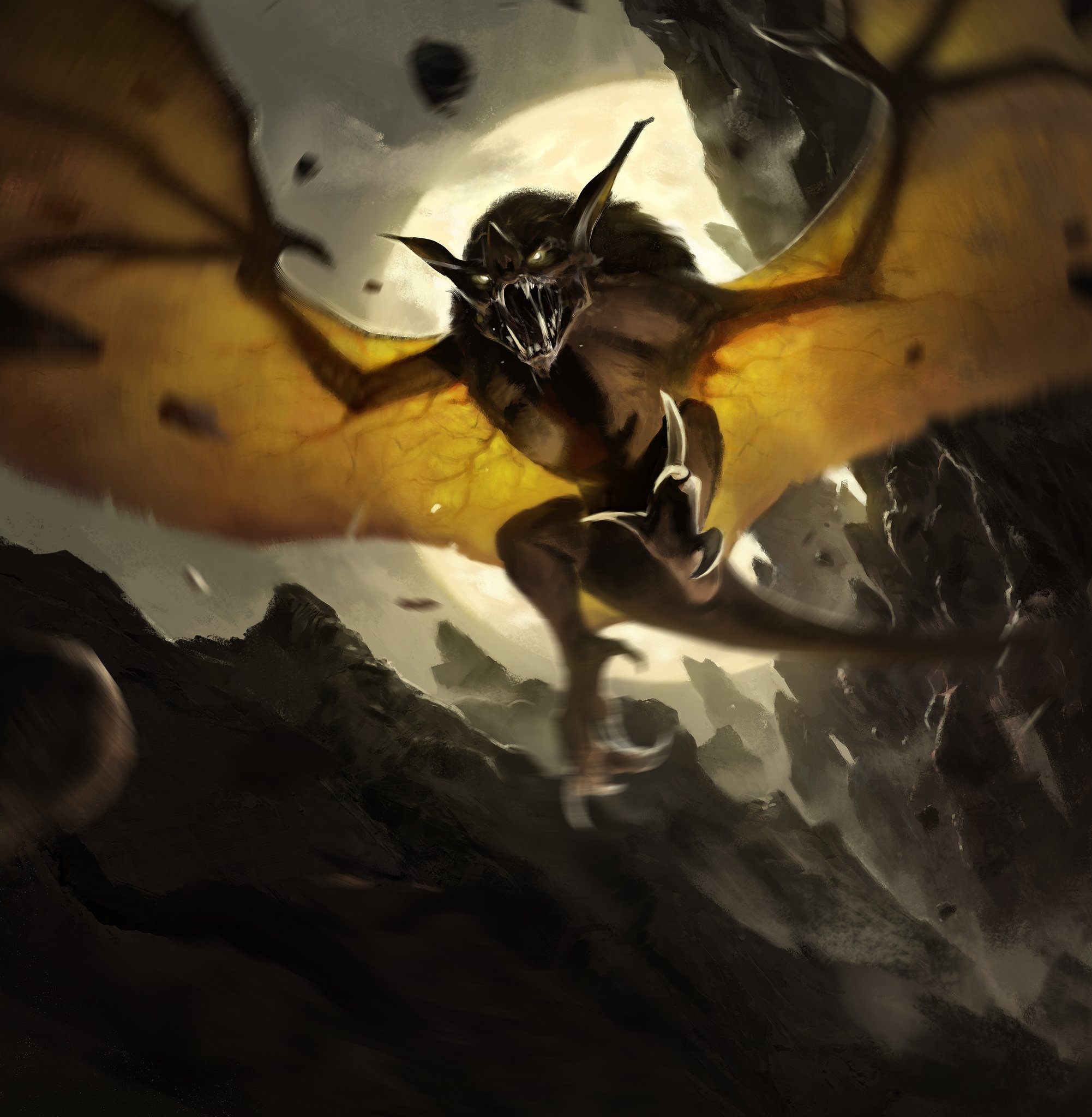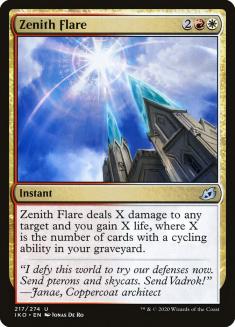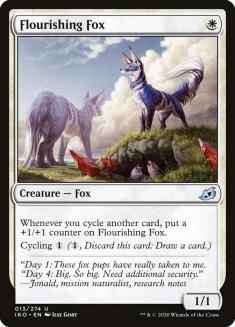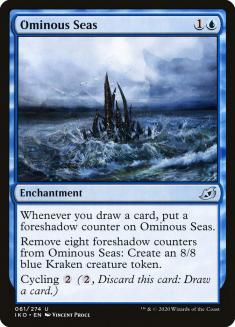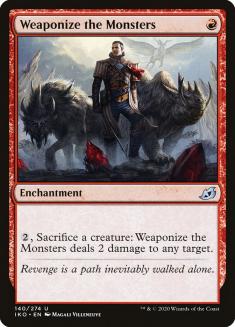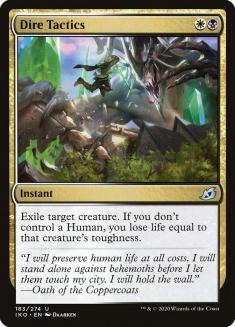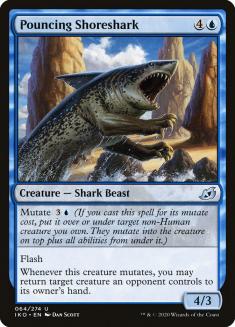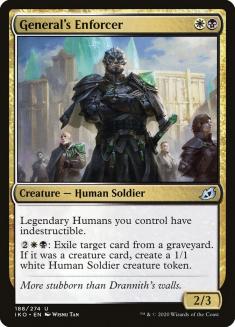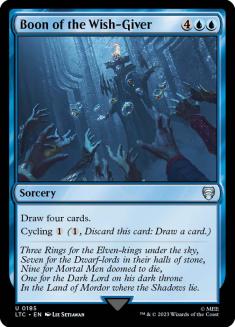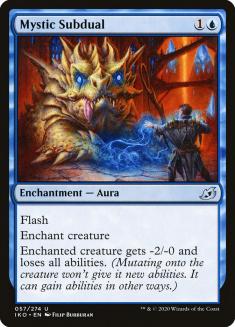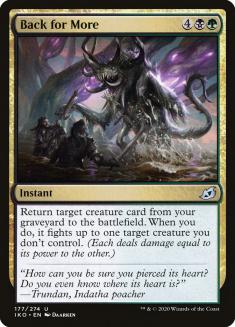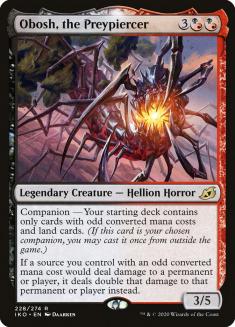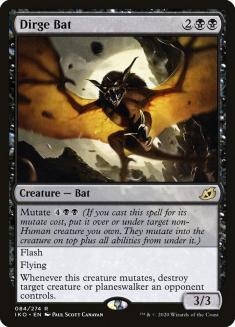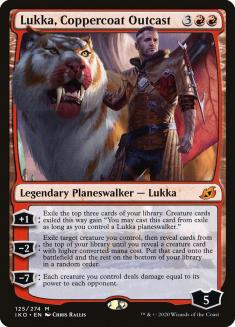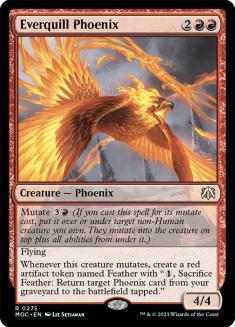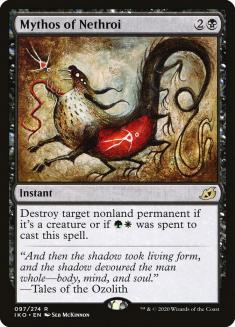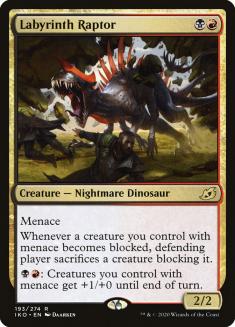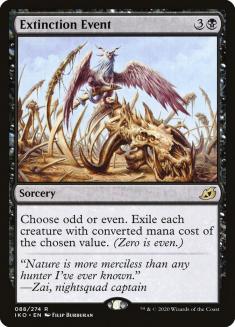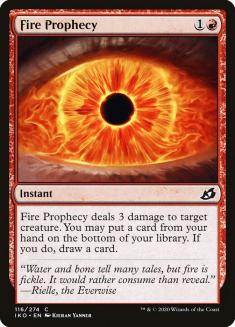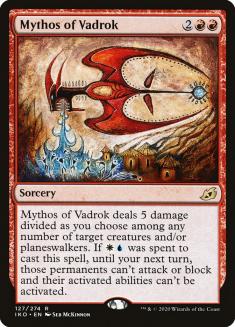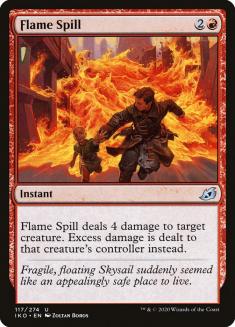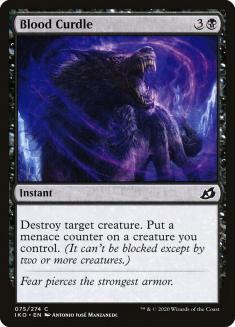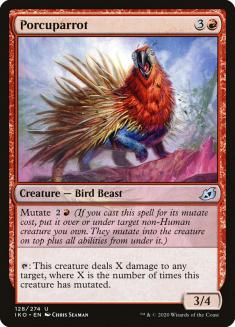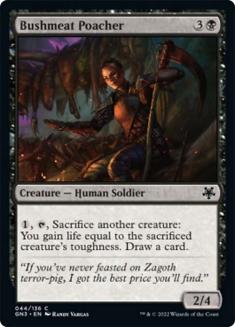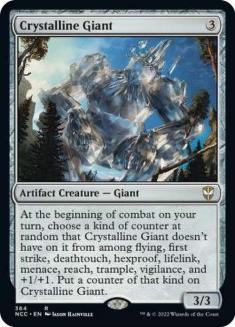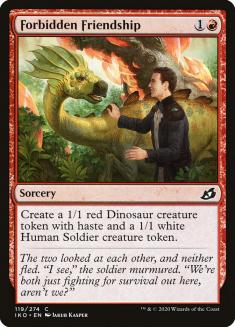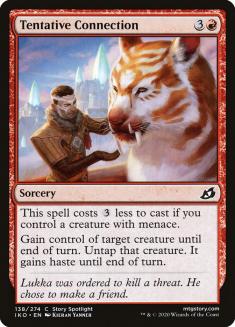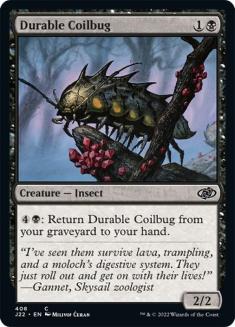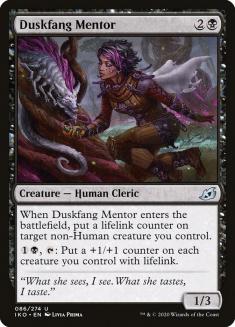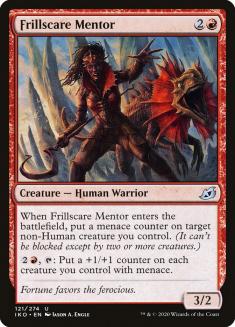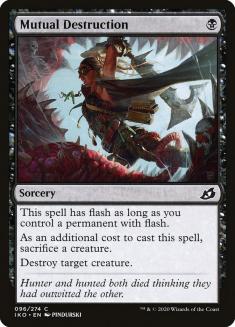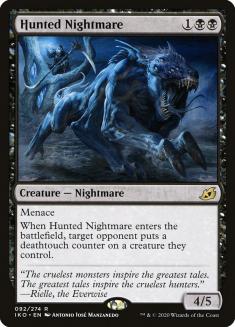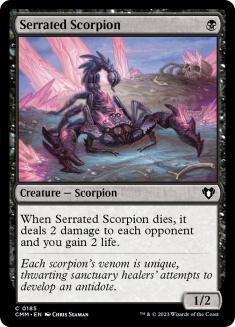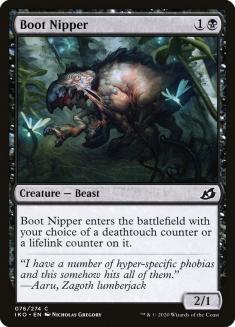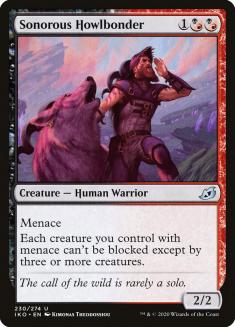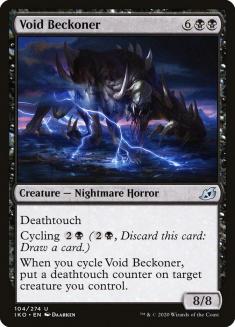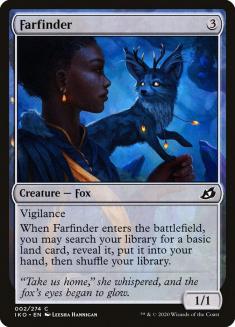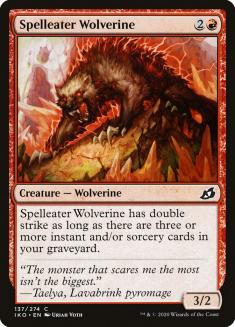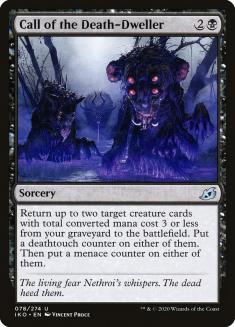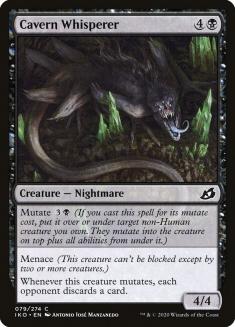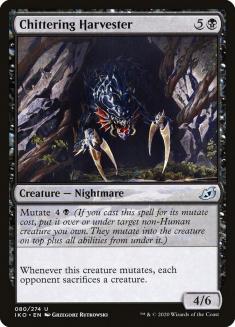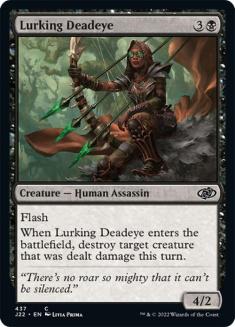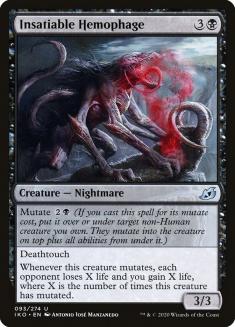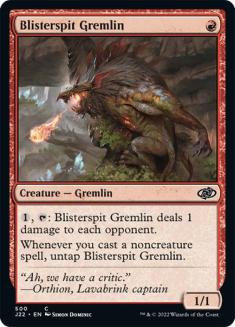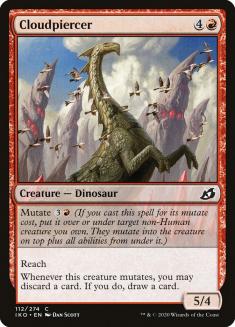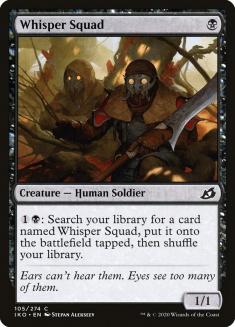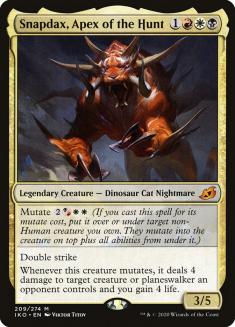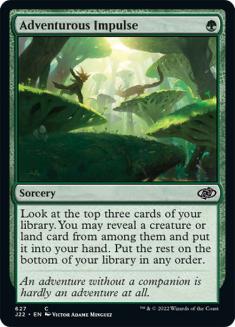Last week I took a big-picture view of Ikoria Limited, from design to what those design choices mean for us as players. This week I want go the other way — I want to get into the fine details of how I draft my top archetypes.
I’m going to start by looking at uncommons. Drafts will often start with rares, but each rare comes up so infrequently that there’s less value in looking in as much detail at those. When you don’t start with a rare, you’re usually going to start with an uncommon, and even if you don’t start with an uncommon, several of them can provide a lot of direction for your deck if you get them early, or in some cases, plan for them later.
Top Uncommons by Color
White:
Blue:
- Ominous Seas
- Pouncing Shoreshark
- Boon of the Wish-Giver
- Mystic Subdual
- Pollywog Symbiote
- Archipelagore
- Wingspan Mentor
- Neutralize
Black:
Red:
- Weaponize the Monsters
- Flame Spill
- Rooting Moloch
- Reptilian Reflection
- Blitz of the Thunder-Raptor
- Porcuparrot
Green:
Multicolor:
- Zenith Flare
- Dire Tactics
- General’s Enforcer
- Back for More
- Boneyard Lurker
- Lore Drakkis
- Savai Thundermane
- Sprite Dragon
- Parcelbeast
- Trumpeting Gnarr
Okay, so that was a bunch of lists with very complex reasoning, no explanation, and a lot of hot takes. I wanted to just get it all out in easily referenced lists before explaining, so now let’s move that into a card-by-card analysis, and I’ll try to do this in order of how highly I’d take each card overall at the beginning of a draft, and I’ll explain why and what I’m looking to do if I start with each.
This is the “mythic uncommon” of this set. Cycling is the strongest archetype and because you see so many cards each game, there’s a massive difference between cycling decks with Zenith Flare and those without. If I’m trying to win and I see a Zenith Flare that I don’t have to give up too many cards to play, I’m taking it and drafting around it, despite the fact that I find doing so pretty boring at this point (refer to the end of my previous article for what I’m looking to do from here).
Relative to that list, I’m increasing my prioritization of cheap cyclers over payoffs — if I have a Flare I’m basically taking anything with cycling 1 over anything that doesn’t have cycling 1 except another Zenith Flare, Valiant Rescuer, or Ominous Seas.
This card is nowhere near as good as Zenith Flare, and there are tons of rares I’d take over Fox and under Zenith Flare, and if I don’t feel like drafting cycling, I don’t think it’s a great crime to pass Flourishing Fox. But if I’m trying to win, I’d recommend this over other uncommons and I’d draft basically the same as if I had a Zenith Flare (and hope to pick one up at some point).
“Unbeatable early and cycles late” is a pretty good baseline for a card. Ominous Seas isn’t actually unbeatable early, but is very strong and I’ve been fully carried by this card several times. When I start with this, I’m still basically looking to draft cycling pretty normally, but early on I’ll deprioritize Snare Tactician and other white cards, and likely try to play Izzet or Izzet splashing a few white sources to potentially cast some white cycling cards or a splashed Zenith Flare. I’m also a little more willing to take no-cycling interaction like Convolute, Essence Scatter, and red removal. Basically I’ll look to lean more controlling in a cycling deck that starts here. Boon of the Wish-Giver and Neutralize become very high priorities.
My first hot take is probably how high I am on this card. I’ve had a lot of success with Rakdos Sacrifice and Orzhov Humans archetypes, both of which are largely based on maximizing Bushmeat Poacher, and this card levels up those archetypes the way that Zenith Flare levels up cycling decks. Incidentally, both cards let you win without attacking. Key commons I’m looking for after starting with Bastion of Remembrance are Bushmeat Poacher, Nightsquad Commando, Durable Coilbug, and Mutual Destruction (and obviously I still want Blood Curdle just on raw power level). I’ll also be keeping an eye on Whisper Squads, and from there I’m looking to figure out if I’m red for Tentative Connection and Forbidden Friendship (and especially Weaponize the Monsters at uncommon), or white for — well, to draft Orzhov Humans as an archetype in general, rather than specific cards like in red.
This will certainly be the hottest take here and easily dismissed as “Sam Black being Sam Black.” I didn’t touch this card for my first couple of weeks with the format until Sam Pardee turned me on to it. It’s stronger than Bastion of Remembrance, but so far, I’ve been able to plan to table it instead of needing to take it right when I see it, though I expect that’ll stop soon. This card levels up Rakdos even more than Bastion of Remembrance, and I even had good results when I tried it in a cycling deck with a single Valiant Rescuer. This card is really good. You want to prioritize Forbidden Friendship, Durable Coilbug, Nightsquad Commando, Daysquad Marshal, and Garrison Cat, but most of those cards are better than they look anyway. It’s weirdly easy to kill someone with this because decks in this format just aren’t really designed to beat people pressuring them in this way.
The plan is to draft cycling, but I’m happy to jump into a Weaponize the Monsters/Cycling hybrid or Orzhov Humans from here.
There’s a lot of good, cheap removal for one to two mana with various restrictions or limitations — Dire Tactics, Swallow Whole, Heartless Act, Blitz of the Thunder-Raptor, and Mystic Subdual. I like all of these cards a lot. I like Dire Tactics most because it’s the least conditional. Being gold is a pretty big deal, so I think I’m overrating this card, but I like Orzhov and think this is pretty easy to splash.
I suspect others are likely higher on this than I am. I’d say it’s tentatively this high for me. It’s more likely to go down than up, but I’m currently somewhat optimistic about it. Here’s the deal — I think green is the worst color by a lot. I thought this based on my early study before drafting, tried drafting it a bunch to figure it would, concluded that it wasn’t very good, and then moved even further down on it after figuring out how to make other nonblue archetypes work even better.
I’m also (relatedly) down on mutate as a whole. Pouncing Shoreshark is one of the better cards if you do end up trying to draft a mutate deck, but what’s actually carrying this card to this high of a ranking is that I’m currently optimistic about Dimir tempo/aggro, an archetype I haven’t really gotten to explore enough, but suspect is better than I’d realized.
A good body for two mana that takes over the late-game and combines well with other cards I like. Narrow, but a good start to a good deck.
The removal spell is awkwardly more conditional than I want it to be, but still a great rate that leaves me very open.
This is a great card. Any time you get to a long game and have time, drawing four is a great way to win, and cycling away for one mana means the option’s basically free. Despite that, this card’s kind of underperformed in Simic decks that aren’t really looking to take a turn off for this kind of thing, but I don’t like Simic decks anyway. This is a flexible card, but I’m still going to plan to draft basically as if I’d first-picked Ominous Seas.
It’s absurd that this card is as good as it is, especially in a format where Dead Weight is as bad as it is. That’s one of the most impressive feats in the design of this set to me. Anyway, there are a lot of great creatures with two power and good text boxes that this functionally kills, and being able to counter a stack of mutate triggers while crippling the creature results in some of the biggest blowouts in the format. This is also the only set I can think of since Magic was designed for drafting where it’s literally not possible to bounce your own creature (though some flickering exists, but even that isn’t at common), which makes it a pretty good set for removal-based Auras. I don’t think this provides any real direction for my draft. It’s just a good, flexible removal spell.
This is a ridiculously powerful card that’s only this low on this list because I hate green, but this is pretty easily splashed and worth playing green for. Titanoth Rex becomes a priority if you have this, but I think Imposing Vantasaur doesn’t get enough respect as a great card to pair with Back for More. Cycling for only one mana makes it much less disruptive to your draw than the larger two-mana creatures and you still generally get a solid two-for-one. You’re hoping to do better, but this is an extremely low-cost safety valve.
I think as we get further down, the exact order is less important and the explanations might start to get repetitive. Here are some final big-picture notes on why these are ranked the way they are:
- I’m currently way down on mutate. This list is actually trying to correct somewhat for my bias by giving them a little bit of benefit of doubt relative to how I actually feel about them. Pollywog Symbiote is a great card in a mutate deck, and if you’re likely to draft one, it should be a higher pick for you. For me, I’m actually taking it lower than I have listed, but I’ve moved it up slightly to reflect where I expect it to bounce back to long-term.
- Every mutate card on this list is similarly being punished. I used to take all of them much higher and I’ve adjusted down, but it’s possible that my personal drafting is overcorrecting, so I’ve kind of averaged where I used to be and where I am now for this list to find something closest to the likely truth for other drafters.
- Auspicious Starrix is the only green uncommon I listed. That’s because I don’t think the others should be first-picked over good commons. The fact that green only has one good uncommon contributes to my not wanting to draft green, which leads to punishing the green uncommons, so the reasoning is a little circular. If I liked green I’d list Glowstone Recluse, or maybe even Hornbash Mentor, Ivy Elemental, Titanoth Rex, and Exuberant Wolfbear, but I think taking those early isn’t a good idea.
I’ve gotten more than bogged down enough in card-by-card analysis. Let’s get to archetypes.
Rakdos
Rakdos is my favorite archetype at the moment, much to my surprise, since on initial evaluation I didn’t think any of the allied colors had sufficient support. I’ve had a few different kinds of Rakdos decks, but I’ll try to group them all together for the purpose of ranking cards.
Rankings of cards you want in this deck:
Yeah, companions are messed up. The two- and four-cost cards are very important to this deck, but you can make do.
Bomb rare that makes you want to prioritize other mutate creatures a bit more highly.
I haven’t had Lukka in this archetype, but on paper it seems like it shoud be a great fit.
Last time I drafted this, I took Bastion of Remembrance over this because I correctly predicted that I could table the Weaponize, but you really want this card more than basically everything else.
Weaker bomb rare than Bat, but still too good not to prioritize.
This gives you fodder, makes racing hard, and lets you just incidentally win while playing defense. Top priority.
Great removal spell.
This is a really strong threat that makes me want to prioritize other menace creatures.
I’m not sure exactly where to rank this. The blowouts are real and generally one mode or the other will be pretty good, but it’s a little awkward in a creature-centric archetype like this.
Great rate and this archetype is definitely happy to be able to cycle away an extra land late.
In all other cases and early in a draft I like Heartless Act more than Fire Prophecy, but this archetype wants the card filtering more and has other ways to kill big creatures.
Sometimes this is great and you can usually kill two creatures with it, but it’s not that rare that you’d rather have Blood Curdle and four is a bad casting cost for this deck.
Generally I like Flame Spill more than Fire Prophecy, but in this archetype you have enough hard removal that you don’t need the increased flexibility and you really value both the efficiency and bonus ability of Fire Prophecy.
The menace counter actually matters and instant-speed hard removal is great in this format. As with all four-drops in this archetype, it’s pushed back somewhat relative to its power level because I expect to have too many four-mana spells.
I’m not sure how to rank this. It basically gives you a weird side quest to find as many Boot Nippers as possible to try to build “Tap: Destroy target creature” and then hope they can’t kill that. It’s very strong when this happens.
This might actually be more important than Blood Curdle, but it’s much easier to get so I’ll take Blood Curdle over it for most of the draft. I’ve frequently ended up with three to five of these and I want all I can get, since they’re really the backbone of the deck. They turn Tentative Connection into a cantrip removal spell that damages your opponent, and let you crawl back from way behind by chumping and gaining life and drawing more chump blockers. This card’s amazing.
Random great creature that I’m not cutting but has minimal synergy in this deck. At the beginning of the draft I’m taking this ahead of basically everything, but if I open it Pack 3 when I’m this archetype, I could easily take a synergy piece over it.
In a lot of ways, this feels like the backbone of this deck. You get a solid creature and a fodder creature, which is exactly what you want.
This is the most efficient way to get multiple bodies, which is exactly what you’re looking for.
I’m not sure exactly where to rank this. I’m basically trying to get all of them at the table, but I’ll assume I can table any that I see in the first four picks. If I fail to table one at some point, I’ll basically stop passing them. Adjust down if it’s late in the draft and I’m short on sacrifice outlets.
Super-hard-working two-drop that slots nicely into a curve to get battlefield presence and let you trigger Nightsquad Commando, and also becomes an engine late with Weaponize the Monsters or Bushmeat Poacher. If this were uncommon it would be a higher priority, but you don’t really need more than two of these. I wouldn’t cut the third, but they have diminishing returns.
Strong card that can take over in battlefield stalls. You really want to prioritize cheap non-Humans if you have this.
Much weaker than Duskfang, but it’s nice to get a menace creature for Tentative Connection’s discount and it can still take over. Occasionally you can actually end up in a dedicated menace deck where the pump ability becomes great.
I like to try to get these late, but they’re very good in most versions of this archetype.
Good rate for an aggro card, but doesn’t take over the game as well as Mentors and it’s kind of tough on the mana.
This can run away with a game and plays well with removal, but the drawback can be really annoying, so I’ve only had mediocre results with this.
This has been weirdly good. Having a one-drop is great. Plays super-well with Bushmeat Poacher.
Kind of filler but you want cheap creatures. Great to have in your deck if you have Duskfang Mentor.
Good way to push damage, but not good for going wide. Move up considerably if you end up with a menace subtheme, especially with Labyrinth Raptor.
Good trick, but clunky enough that I don’t want to prioritize it.
A little off-plan in that you don’t benefit much from the land, but a value creature’s a value creature. Adjust up if you have more mutate and down if you have less.
I’m not looking to add random cycling cards to my deck to enable this and unlikely to use enough removal to turn on double strike quickly. It’s a good card, but this is a pretty bad deck for it most of the time.
Powerful, but a little hard to enable especially for max value. I really want Serrated Scorpions if I have this to try to get two creatures back.
This is held back because there are so many more important four-mana cards that you end up with a real glut there in a deck that wants a low curve, but it plays really well in more aggressive versions of the deck and it’s a great fit except for all the competition at four.
I’m not really looking for big mutate stacks and this is slow and off-plan. It’s powerful enough that I’m probably not cutting it, but it’s a big departure from what I’m trying to do by default.
Totally on plan, but runs into the four-drop problem where the others are just more important.
Okay rate, but really not the kind of strategy you’re looking for. Take much more highly if you have Porcuparrot.
Weirdly serviceable one-drop, but you never need to take it over anything.
This is basically a bad Cavern Whisperer. Weird things can make me end up with a mutate package where I want this, but it’s not something I’m looking for.
Consider this card unranked rather than at the bottom. If you have a lot of sacrifice outlets, you can play two of these. It’s good to end up with three-plus, but I’m not willing to take them speculatively over anything important. If I pass one in the first pack and see another before the first comes back, I’ll probably try to take the second and see if I wheel the first. I don’t think these are a super-high priority by default, but if you can get multiples, good.
Broadly speaking, you want some good removal and the lowest curve you can get while still playing all the Poachers, Curdles, and tentative connections you can get your hands on. You want one- and two-drops to attack to enable Nightsquad Command, or to let you get value out of a mentor on Turn 3. Tentative Connection with a sacrifice outlet is just amazing against most decks in the format.
Note the omission of all cycling cards and payoffs. That’s not an accident and I think Drannith Stinger is mostly a trap here. It’s fine to play a Lava Serpent or something, but you want to avoid it because you want a low curve. You really don’t want to be wasting your mana cycling here and the spells aren’t what your deck is looking for.
I’m going to try to show my editor some mercy and go into a little less detail on other archetypes.
Orzhov
A lot of principles from Rakdos apply here. Nightsquad Commando is awesome with Bushmeat Poacher, Mutual Destruction, and Bastion of Remembrance, and you pick up white cards that reward you for going wide as well. We’re still prioritizing all the one- and two-drops to enable that, and then we still want Bushmeat Poacher to take advantage of going wide when we can’t attack.
It’s nice to have a Patagia Tiger or two to attack in the air while locking up the ground with random Humans, and we still want to prioritize all the good removal, while helps make sure Patagia Tiger can connect.
We want to avoid mutate here even more than in Rakdos because we have fewer non-Humans, but sometimes you can end up in the Orzhov Mutate splinter archetype, especially if you have Snapdax, Apex of the Hunt.
I’m increasingly of the belief that the goal in all of these archetypes and in the format in general is to lower your curve more than you think you should. There are a lot of one- and two-drops in the format that look bad, and I think they might basically all be better than they look in a lot of places. Don’t be afraid to play cards like Garrison Cat and Maned Serval.
I should mention Swallow Whole because I haven’t talked about it specifically yet. It’s great, especially if you’re planning to be attacked or have tappers. These token decks plan to do a lot of getting attacked and chump blocking, so it’s very good here.
Dimir
I haven’t drafted this much, but I’ve tried it enough to have come to some significant conclusions. Often, control decks want to have a lot of cheap interaction and then some high impact finishers. I don’t think that’s the case here. A deck like that will get torn apart by the other black decks in the format going wide with bad creatures, and can also easily get outclassed by an opponent with better late-game or lose to Zenith Flare or Ominous Seas or Gyruda, Doom of Depths or any number of other horrible things than can happen in a long game in this format. Instead, Dimir wants to be a tempo deck.
I love the aesthetics of Thieving Otter and rant about Otter crimes whenever I try to connect with it, so I certainly don’t want to report that I think it’s just bad, but that’s how it is. Unfortunately, that doesn’t leave a lot of options. What this means is that you really need to prioritize the few good cheap cards that are available to you — Boot Nipper, Cunning Nightbonder, Durable Coilbug, Duskfang Mentor, Frost Lynx, Glimmerbell, Grimdancer, Nightsquad Commando, Pollywog Symbiote, Slitherwisp, and Wingspan Mentor should all probably be taken quite a bit higher than you’d think. If you have multiple Mentors and you’re low on cheap non-Humans you can even play Aegis Turtle or Serrated Scorpion.
The goal is basically just to establish some kind of clock with whatever random bad two-drop you happen to have and then start answering all your opponent’s stuff. Lurking Deadeye and Pouncing Shoreshark are ideal more expensive creatures, since they let you play a flash game, and then you can prioritize Essence Scatter and Convolute. I don’t think you want to prioritize mutate, but it’s definitely nice to have something to mutate onto a Glimmerbell to end the game.
I’ll reiterate, my current theory is that the key to this format is likely to prioritize a much lower curve than the cards would naturally lead you to expect.
Drafting Green
Finally, let’s talk about green. I’ve had some great mutate decks, but I’ve also had some absolutely horrible mutate decks. At this point, I don’t think I want to really prioritize mutate without a mythic mutate creature. I experimented with treating Migratory Greathorn as the best green common and I think it’s a mistake. I think Humble Naturalist is the key, and that from there you basically just want to be able to cast a lot of good uncommons and rares in various colors.
I suspect Almighty Brushwagg and Adventurous Impulse are both largely underrated but I really think you should avoid green unless you get an early Auspicious Starrix; Back for More; Brokkos, Apex of Forever; Chevill, Bane of Monsters; Frondland Felidar; Gemrazer; Kinnan, Bonder Prodigy; Kogla, the Titan Ape; Quartzwood Crasher; or Vivien, Monsters’ Advocate. I’d definitely avoid first-picking Ram Through or another green common.
Because I think green cards generally aren’t great and I only draft green if I have a bomb, it makes a lot of sense that I’m high on Adventurous Impulse, since it makes me see the bomb more often and also makes it easier for me to splash other colors so that I don’t have to give up on other good cards. When drafting green, I suspect it’s probably best to either settle heavily into your other color, or if you’re base green to not really worry too much about colors — just take the best cards out of every back, prioritize fixing, and make it work, since I think the fact that you can get away with that is really the best thing green has going for it.
Even here, watch your curve. You have some bombs or you wouldn’t be here, so try not to fall behind. Naturalists fix this problem, but if you’re not seeing them, take Symbiotes or two-drops in your likely second most played color, but you definitely want to plan to cast something on Turn 2 reliably.
Conclusions
Removal in this format is very strong. We don’t often have great spot removal at uncommon in literally every color (up to you whether you want to read this as rounding up one Charge of the Forever-Beast or pretending green isn’t a color), and a lot of top commons are good removal spells — Fire Prophecy, Blood Curdle, Ram Through, Pacifism, Essence Scatter — many of which are better than the best common removal spell in their color in many sets.
The second best-removal spell in every color (other than green) is also strong and reliable. You want to take advantage of this by playing cheap creatures that line up well against removal spells and removal spells that punish people for trying to play bigger creatures than you. That’s why decks that drop the curve and try to go wide have been so successful for me and why I recommend lowering the curve and minimizing prioritization of more expensive mutate creatures in your own drafts.
Cycling succeeds because the strategy is naturally pretty good against removal, but you can win with other decks if you build them to exploit the nature of the format, and this will incidentally make you better-positioned to punish cycling decks for spinning their wheels.

